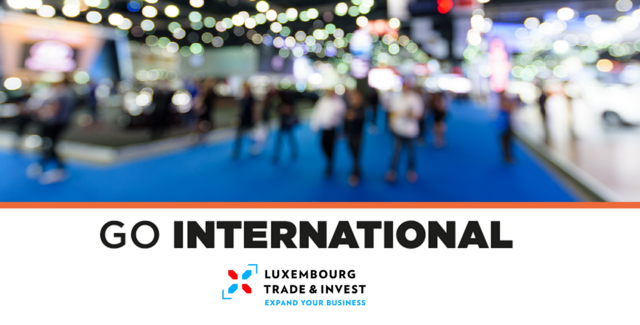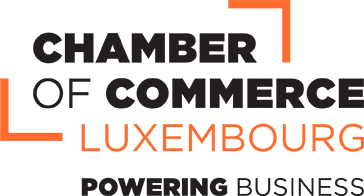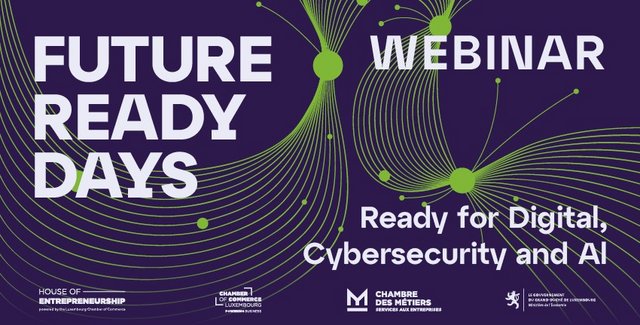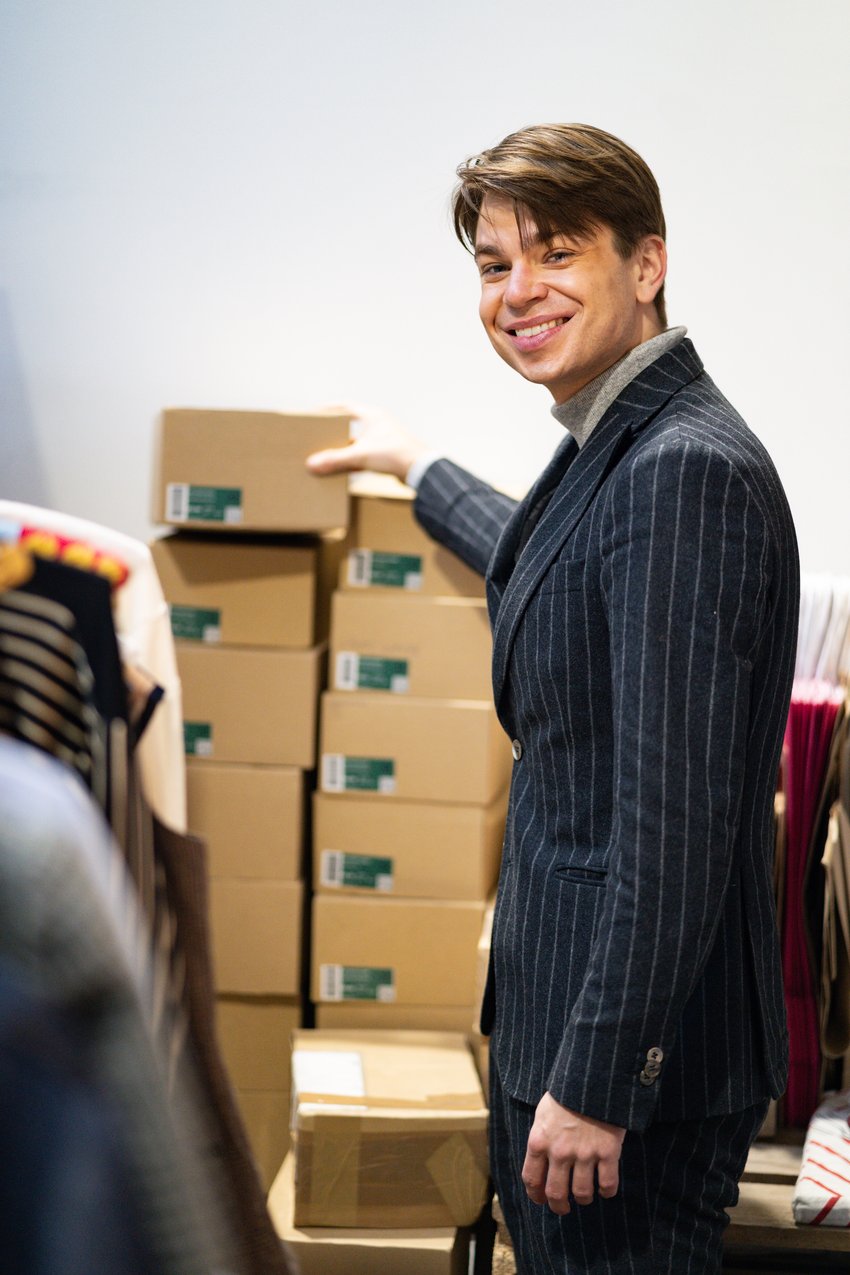

Several years ago, while combing the coastline as part of a community clean-up project in his native Sweden, Filip Westerlund had a disconcerting realisation: in collecting plastic waste, he realised that he himself was dressed from head to toe in versions of plastic – in products that, to date, cannot be recycled. He then asked himself, rather than remove plastics from the ocean and upcycle them into clothing that will only end up in a landfill a short while later, wouldn’t it make more sense to remove plastics from the equation altogether? This is how his circular brand, Our Choice, was born. Starting with sneakers constructed from only four raw materials that can be entirely recycled once they can no longer be repaired, he now also produces compact wallets and has plans in the works for more circular fashion.
Originally from Sweden, you are now a psychologist and an entrepreneur here in Luxembourg! Tell us more about your journey and…why Luxembourg?
I initially came to Luxembourg in 2019 to study psychology at the University of Luxembourg. It was also during this time that I was first inspired to create my circular brand, Our Choice, while participating in a coastal community clean-up back in Sweden. As I was picking up plastic waste, I realised that I was actually dressed mostly in plastic myself, in things that I would sooner, rather than later, be bagging up and throwing away, similar to the waste we were collecting from the coastline. There was a difference though: my clothing couldn’t be disentangled and recycled. It would go into a landfill. This bothered me and I wanted to do something about it.
So, I came up with a plan and we launched our Kickstarter campaign for Our Choice’s circular sneakers during the pandemic, in November 2020. I graduated with an MSc Psychology from the University of Luxembourg in 2021.
As a high energy person, it’s been so interesting and lots of fun to work in these two fields, which are complementary in some ways. Consumer behaviour is a complex piece of psychology.
Why are we producing and buying more plastics when the oceans are full of plastic waste? Why do we go binge shopping and hunt for bargains, without thinking of the greater costs involved? Shopping regulates emotions, it’s fun, rewarding. People also want to be different, they want something new.
You were inspired to create Our Choice during a community oriented coastal clean-up in Sweden. Do you think a sense of environmental custodianship is more ingrained in Scandinavian culture?
I think it’s more nuanced than that. We have become part of a throw-away culture. My grandmother’s generation repaired and reused. My parents’ generation lost that.
Having said that, there are initiatives in Sweden I haven’t seen elsewhere. For example, there is a system in Sweden where you can return your plastic bottles and get money back, which you can take as cash or choose to give to charity. You put the bottles in a machine at the grocery store and the machine gives you a receipt with a bar code that you take to the cashier who rings it up. As children, we would ask for the money back so we could buy candy. I know similar systems exist for glass bottles in other countries, including Luxembourg, but Sweden does make it that much easier to be rewarded for disposing of plastic bottles in a responsible way. This said, Luxembourg has incredible recycling centres!
And your products are plastic free! Tell us more about that. What are your products made of?
Our Choice makes the world’s first truly circular sneakers. This means that the shoes are 100% plastic free, they can be repaired, and they can be recycled. I started by cutting up an old pair of sneakers that had been marketed as ‘eco’ to see what they were made of and found lots of different materials in the shoes. The average pair of sneakers contains 38 different pieces of material and almost none of it can be recycled. Even ‘eco’ brands that are made from recycled PET bottles end up in a landfill after 3 to 12 months because they just aren’t durable, they can’t be repaired, and they can’t be recycled. Why is that? These brands are trying to do something for the environment, but the products will still end up in a landfill. And big name brands aren’t even there yet. They exploit people and the Earth by cutting corners because it’s cheaper. This is why I chose to make my shoes from just three core pieces, four raw materials total: calf leather, natural rubber, coconut fibre, and eco cotton for the shoelaces. The wallets are also made of four raw materials: salmon skin, leather, silk, and eco cotton. I am a firm believer in transparency. The shoes come with a QR code that can be scanned so you can see exactly what they are made of. Our process also has ISO 14001 certification, which is the international standard for managing environmental responsibilities.
You decided to use animal leather rather than vegan leather in your products. Tell us more about this decision.
Today, there are more and more vegan leathers on the market. They are made from things like apple waste, cacti, pineapples, or even mushrooms. Stella McCartney has used vegan mushroom leather in some of her designs. But we all know that you can’t put apples or mushrooms on your feet and have a pair of shoes! So what is holding them together? What could it be? What binds it together is plastic, for example polyvinylchloride or polyester. And before too long, these products will end up in a landfill. They are not durable, and they cannot be disentangled to be recycled. I have utmost respect for vegan ethics. But these vegan products are not circular. They are not sustainable. Mix vegetables with plastic and then throw them away just a few short months later so that they end up in a landfill somewhere in Africa or Asia? No. Sustainability also has to be about durability. Better to compost your apples, or better yet, just use the whole apple like my grandmother did when she made apple sauce, and stop using plastics altogether in shoes. Also, whenever we wash anything plastic, it leaks microplastics into the water, which affects fish, flora, fauna, people… And it’s not only the plastic, but there are chemicals in the binders that can be highly toxic. Some chemicals that are used in the United States are not legal in Europe – they don’t pass the safety standards in the EU. Transparency is a core problem. Some of these vegan companies say they are ‘working on a patent’. There is zero transparency. There are people working on alternatives, like animal-free ‘leather’ grown in a lab, but we just aren’t there yet. Additionally, only 20% of animal hides are being used, the rest is discarded. For me, it makes absolutely no sense to throw away durable material and buy toxic, non-recyclable plastic instead. A circular economy is about taking care of what we have on this planet. As long as people eat meat, we will have the by-product of animal hides that needs to be taken care of.
So how is animal leather sustainable?
The leather we use is Italian calf leather and it is a by-product of the food industry as is the salmon skin in the wallets. As long as animal products are consumed, this natural by-product will be available, and it is a durable, circular, sustainable solution in that it can be used to clothe people long-term. If you take care of it, leather can last for a very, very long time. In a way, my products are about going back to basics. When I was a child and my shoes would get scuffed up, my grandmother would pull out the shoe polish to polish them. When the heels would start to wear down, she would remind my mother that it was time to take them to the cobbler to have them reheeled or re-soled. In just one generation, we have lost that reflex as well as products that can be repaired. We don’t repair things, and many things cannot be recycled so we throw them away and buy something new. As I’ve said, we’ve become a throw-away culture. It’s a shame for many reasons. First of all, where is the ‘away’ when we ‘throw away’ something? A landfill. Usually in a developing country, whose communities are being poisoned by it. Then there are the peripheral activities, like the act of polishing shoes. Taking time to take care of them and appreciate them. Today’s average consumer buys seven new pairs of shoes a year! In many places, it’s hard to even find a cobbler these days, so that’s also a trade, and a part of the economy, that is being lost. Younger generations also understand and appreciate this. Our youngest customer so far is 14 and our oldest is 79. So it’s going beyond being generational now.
Your shoes can be repaired or recycled. How does that work?
We have done our best to create a sturdy product that will last. We use reinforced stitches to fix the leather to the sole and the heel grip also doubles as a pull tab that makes pulling on the shoes easier when you’re in a hurry and increases the strength of the heel wall overall. Anything that is used will need to be repaired at some point so, as a circular brand, you can always send your shoes back to us for repairs or to be re-soled.
Using simple Scandinavian design and only four pieces of raw material per shoe, our sneakers are constructed in a way that facilitates disassembling, repair, or recycling at the end of their life. The stitches that fix the leather to the rubber sole can be removed to replace the sole. The sole is made from natural rubber-sap from the rubber tree, or from recycled rubber. Our used outsoles can be recycled into new outsoles. We use a high-quality leather called top grain. It becomes more beautiful with time, but also more comfortable as the material takes the shape of one’s feet. The insoles are made of hemp, organic cotton, nettles, and coconut fibre. But we also must take care of these products. Shoes made from so-called vegan leather is in practice a plastic shoe, which doesn’t breathe, ages quickly, and when it breaks it’s impossible to repair. Quality leather shoes will last for years but shouldn’t be used every day, they need to rest from time to time to dry out, should always be stored on a shoe tree when not in use, and a high-quality natural polish should be used on them to keep them smooth and prevent them from drying out. Today, no one takes care of their shoes or fashion items in this way, so it’s really a learning curve for many, even if our grandparents were used to this.
Where are your products made?
Portugal. We manufacture on digital demand and only keep a small amount in stock (which comes with another set of challenges!) and at first it was hard to find a manufacturer interested in that business model. Most of them wanted to produce large quantities. So, we kept looking until we found a sustainable manufacturer aligned with our vision and we are very happy with our collaboration. It feels like a good match, especially given the history between Portugal and Luxembourg. Portugal has been very supportive. We hosted a series of three webinars in partnership with the Portuguese-Belgian-Luxembourg Chamber of Commerce aimed at raising awareness about the circular economy. We had industry experts from the US, Portugal, Scandinavia and of course Luxembourg – for example Georges Schaaf, Head of Sector Development Cleantech at Luxinnovation.
Your shoes are available by digital demand – by ordering online. Can people see your products in person before purchasing?
Absolutely. We are in the Caritas Lët'z Refashion pop-up store for sustainable and ethical fashion in Luxembourg City, which has been a wonderful platform for our products. Caritas has been so supportive. They have other circular designers in their popup store and community activities several times a week. Caritas promotes employment for vulnerable people, and everyone works side by side in the store. It is very important to work with like-minded people, to have a community.
Luxembourg overall has been great, has really accelerated us, and is exactly the right spot for us. The support has been incredible every step of the way. We have a great network here. Franz Fayot, the Minister of the Economy and Minister for Development Cooperation and Humanitarian Affairs, wears our shoes!
You launched in 2020. How is business going so far?
We’ve been in business for just over one year. We are growing organically and are successful. I am very proud of how far we’ve come. 90% of startups don’t make it. We need longterm investment now. There is a global and a structural problem. I feel we are right in a paradigm shift as the landscape for investments is also changing and becoming greener. Unfortunately, some people are still using old tools to assess green investing. But we only have eight years to go to 2030 – to reach the UN sustainable development goals. That being said, feedback is promising, and we have prepared an investor memorandum (IM) together with the EYnovation team here in Luxembourg, which is a group of professionals helping startups at Ernst and Young.
What do you have lined up next?
We have proven that a sustainable startup can also be a viable business. Shoes and wallets have been first steps. We have more products in the pipeline and together, they will all make up a circular capsule wardrobe and create a demo on a circular fashion platform that we are building together with other actors in the supply chain. We aim to utilise block chain technology to increase transparency but also to unlock the circular economy in fashion for customers. In a circular economy, we need to convert the traditional customer into users. The throw-away culture in which most of us grew up will need to change for us to achieve the UN goals. As a psychologist, this is my expertise: behavioural change. We are looking to incentivise and engage the traditional customer so that we can re-circulate items and materials instead of throwing our old stuff away. One example is again the sneakers: we have a takeback scheme in place so that you can book a repair or recycling instead of throwing them in the bin. Our job is to reinforce sustainable behaviours to achieve change. A way of reinforcing these behaviours is of course financial (you save money over time if you repair instead of always buying new) but also to pair the behaviours we want to see with community. We have to be community minded. We need to be disruptive together and fashion still needs to be about fun and pleasurable even if circular.
What words of advice do you have for future entrepreneurs?
Well, I myself received lots of advice, and I do love advice! But some of the advice I received… ‘wait until a better time’, ‘don’t charge too much’, … I didn’t listen. My advice is to just start! You will learn as you go. Don’t overthink, the sooner you execute the sooner you will make mistakes and learn from them. An idea is only an idea before executed. I went ahead and launched during a pandemic! And I chose prices and models that felt right to me. No one has ever done what we did before, so we simply have to do what works. So I would say, it’s not all in the books. Stick with your gut. And be prepared to work hard. I’m a psychologist. I had no background in the fashion industry. But I’m a very high energy person and I love what I’m doing, and I believe in what I am doing. That is key – I don’t believe in ‘work-life-balance’ but in a sustainable lifestyle. Find out how you can live your business instead of thinking about how many hours per day you work. It will be non-stop, but it also needs to be something you enjoy doing. My advice is to fully live and breathe your business and it won’t ever feel like too many hours.
More information:
TEXT Hannah Ekberg - PHOTOS Matthieu Freund-Priacel/ Primatt Photography















